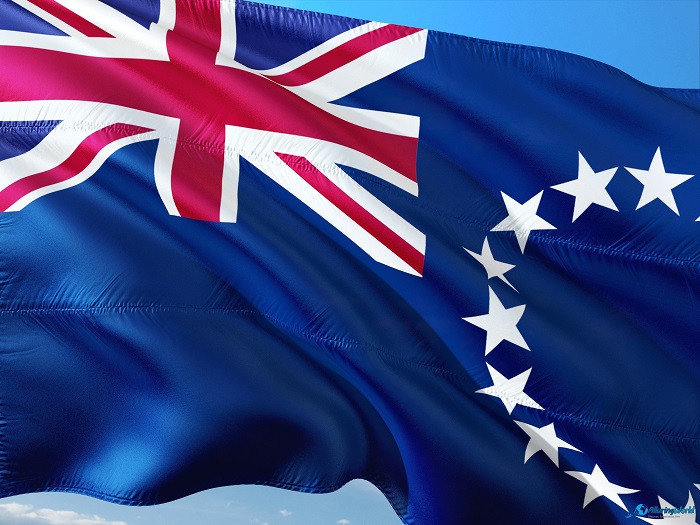One Foot Island, known locally as Tapuaetai, is one of the most captivating islets that can be found in the Aitutaki Lagoon, which is part of the self-governing island nation of the Cook Islands, which is in free association with New Zealand. With its untouched beaches, impossibly clear water, and a name wrapped in legend, it has become one of the most photographed tropical locations in the South Pacific. Although small in size, its cultural value, geological story, and visitor experience make it one of the region’s most compelling destinations.
One Foot Island rests on the southeastern edge of Aitutaki Lagoon, roughly 230 km (143 mi) north of Rarotonga, the capital island of the Cook Islands. The islet is part of a ring of motus that encircle one of the world’s most beautiful lagoons, and this is an expanse famous for its turquoise shallows and pristine coral structures. Those who are visiting this Pacific gem typically depart from the island of Aitutaki, which serves as the gateway to this idyllic speck of land.
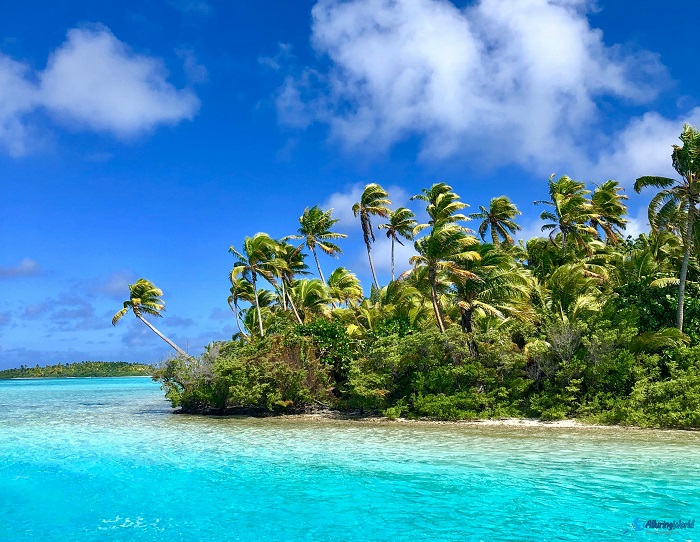
The island’s formation traces back to ancient volcanic activity. As it is the usual case with the creation of other Pacific islands, the story here is the same as millions of years ago: a towering shield volcano emerged from the ocean. As it eroded and subsided, a coral reef began forming around its perimeter. Over time, the volcano’s central mass collapsed beneath the sea surface, and it left behind the vast lagoon that we see today, encircled by coral islets known as motus. One Foot Island is one of these motus, and since it is composed primarily of coral sand and limestone fragments shaped by wind, tides, and lagoon currents, it creates a recognizable and very unique landscape that will leave you breathless. Its long stretch of white sand is the result of continuous reef erosion and deposition, creating the powder-fine beach that visitors admire today.
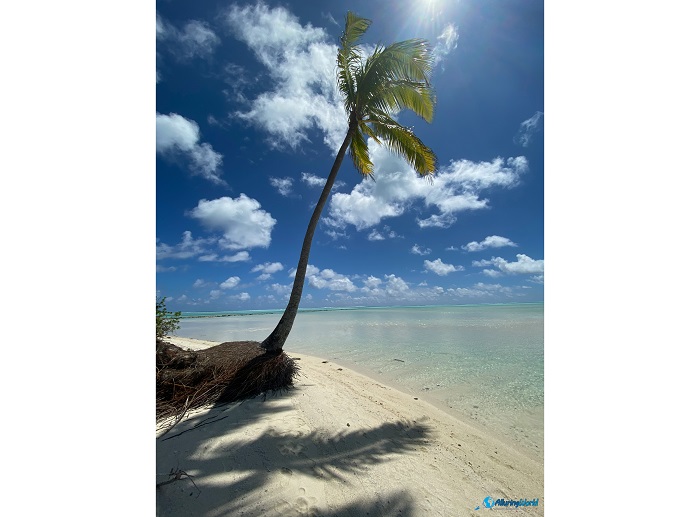
While the island’s beauty is a major draw, behind the scenes, its cultural meaning gives it depth beyond its scenery. There is a local tradition that tells a story of a father and son fleeing enemies, so to be able to protect the boy, the father carried him on his shoulders through shallow waters, leaving only one set of footprints on the sand. This tale of sacrifice and protection is what gave the island its English name.
ADVERTISEMENT
In addition to this, today, One Foot Island also holds national significance as a protected marine space. Its nearby waters are home to vibrant coral ecosystems, essential feeding zones for lagoon fish species, and some of the healthiest shallow-water environments in the region. With its symbol as a legendary place and a place of great ecological importance, this islet is an enduring icon of Aitutaki and a treasured part of the Cook Islands.
As a low-lying coral cay within a vast lagoon, its flora is typical of a Pacific atoll, primarily consisting of hardy, salt-tolerant coastal and strand vegetation. The islet is characterized by pristine white sandy beaches backed by groves of coconut palm trees. Other common plants in this littoral environment include shrubs like Pemphis acidula near the water’s edge and potentially Pandanus trees and Suriana scrub further inland. This limited, yet picturesque, plant life contributes to the islet’s reputation as a quintessential tropical paradise.
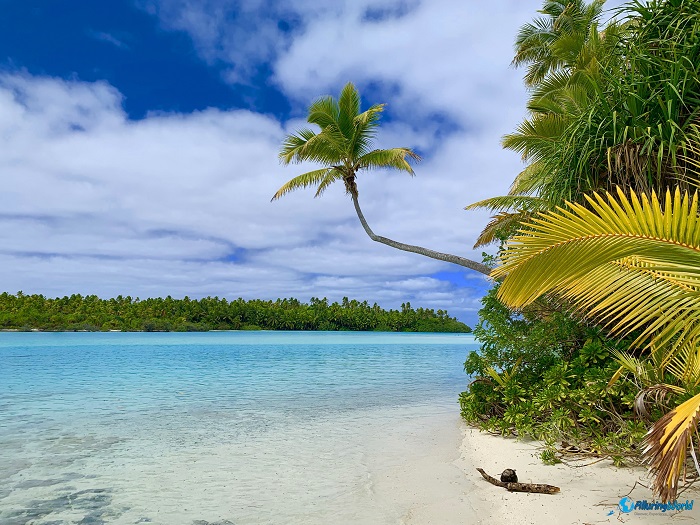
The fauna of One Foot Island is predominantly centered on its rich marine and avian life. The surrounding turquoise waters are teeming with diverse marine species, including numerous types of tropical fish, giant clams, and a variety of corals. On land, the islet serves as a refuge and nesting site for several species of seabirds and shorebirds, such as the Red-tailed Tropicbird, Brown Noddy, White Tern, and Pacific Reef Heron. Land animals are less prominent but typically include various species of geckos and crabs, like the ubiquitous hermit crabs, which patrol the beaches and sandy areas.
If you would like to reach this alluring paradise, the journey is straightforward but requires some planning on your end. Travelers begin by flying into Aitutaki from Rarotonga. There are numerous lagoon tours from the main island which operate daily, and as they are using small boats or catamarans to reach the motu, the journey is easy, peaceful, and quite relaxing with the vast Pacific Ocean. Depending on the operator, the journey takes about 20–30 minutes across calm, shallow waters. These trips typically include stops for swimming, snorkeling, and exploring nearby sandbars before arriving at One Foot Island itself, which is an extra motivation for you to take this adventure.

Since this islet is an uninhabited one and does not have a permanent restaurant or public food facilities, it is crucial for visitors to plan ahead. Travelers joining a day trip or lagoon cruise should confirm if a BBQ lunch is included, otherwise, they must bring their own food, snacks, and plenty of drinking water.
Independent travel, sadly, is not very common because visitors must follow conservation rules and respect designated zones within the lagoon. Organized tours make this easier, while also ensuring safe navigation through the coral patches and shifting sand channels.

Due to the warm weather that is present throughout the year, One Foot Island is great to be visited any time of the year; however, perhaps the most ideal visiting period is during the dry season, which runs from May to October. During these months, you will have more stable weather, calmer seas, and clearer skies, which enhance visibility for snorkeling and photography. On the other hand, the wet season between November and April is another option, but this brings higher humidity and occasional tropical showers, though temperatures remain pleasant year-round.
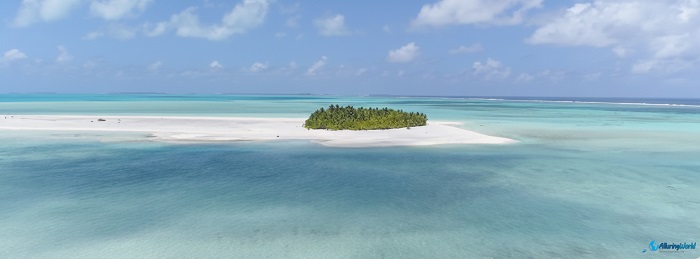
Despite its small size, the island provides a surprisingly rich experience, and you can do different activities in this heavenly place. Perhaps the most popular activity is snorkelling. As the lagoon’s shallow coral gardens are teeming with colorful fish species, clams, and reef formations, this might be the perfect place to see the colorful underwater life the Pacific has to offer. The crystalline water offers some of the calmest and clearest conditions in the South Pacific, so swimming here is a must. In case you are not very keen on getting wet, then the long stretch of sand is perfect for barefoot beach walks as you wander and enjoy uninterrupted lagoon views. Its sandbars, shifting tidal pools, and turquoise colors often appear surreal through a camera lens, so having your camera is something that you should take advantage of.
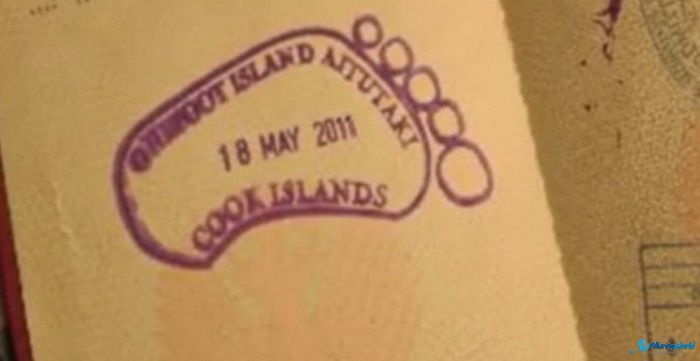
Last but not least, One Foot Island has one of the world’s most unique quirks. Its tiny post office can stamp visitors’ passports as a memorable keepsake; however, you should be aware that a stamp from an unofficial border can potentially cause issues for you when you travel to somewhat restrictive countries. Although it is rare, and it should not be a big issue, still be aware, and maybe it would be better if you get the stamp as a souvenir in your notebook or a small piece of paper.
In conclusion, One Foot Island is more than a tropical escape than you might think it is. Combined together, the island represents the identity and heritage of Aitutaki’s people, while at the same time reflecting the geological evolution of the South Pacific, and stands as one of the region’s strongest eco-tourism attractions. Enjoying the protected status helps preserve fragile coral and marine life, while its cultural stories continue to shape local traditions and visitor experiences, so if you visit it, be conscious of the surroundings and make sure that you enjoy it to the fullest in this paradise on Earth.
